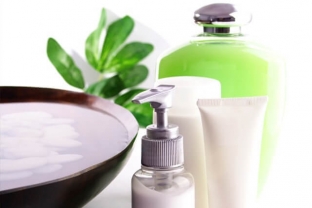Despite the general love for everything as natural as possible, including skin care products, experts have already managed to convince almost everyone that a natural product is only good for a single use. Further, it is colonized by bacteria that will bring much more harm to the skin than not too natural products, but containing preservatives. It is thanks to preservative substances that cosmetics can be transported, stored and have the expected effect on our skin for a long time. However, among the preservatives there may be quite aggressive substances that allergy sufferers should be aware of. What are these substances – dealing with estet-portal.com.
Preservatives in cosmetics, the presence of which should not be embarrassing
One of the most well-known means, which is an excellent preservative, but at the same time received not too pleasant fame thanks to journalistic publications – parabens. The acid from which methyl parahydroxybenzoate (E218) and propyl parahydroxybenzoate (E216) are synthesized is found in some plants (for example, lingonberries), so methyl paraben can to a certain extent be considered almost a natural product.
Parabens have a very low level of sensitization, and once in the body, they are easily removed from it without creating side effects. It is one of the most studied preservatives in terms of immediate and long-term effects on the body.
That is why many of the world's leading companies include this preservative in children's cosmetics – parabens are neutral for the body and are suitable for the care of very sensitive skin of babies. As for the journalistic investigations about this preservative, they began with an article about parabens as possible provocateurs of breast cancer. But after numerous serious scientific studies of this problem, world organizations for the control of the quality of cosmetic products declared that this hypothesis had no basis whatsoever. However, the "paraben-free" trend gained wide popularity.
Another mildly sensitizing preservative – phenoxyethanol, which is used in organic cosmetics. True, to enhance it, the product usually contains organic acids from the group of benzoates and sorbates (these acids can be found in sauces, preserves and even candies).
Natural preservatives used in children's cosmetics and organic cosmetics that those who suffer from allergies should be aware of are also:
- Sodium Benzoate;
- potassium sorbate (Potassium Sorbate);
- corn alcohol (Caprylyl Glycol).
All listed substances – eco-friendly components, natural preservatives, which are used, among other things, in the food industry.

Preservatives that can significantly spoil the impression of cosmetics
One of the most powerful preservatives, the name of which can be found on the packaging of a cosmetic product, is methylisothiazolinone (methylisothiazolinone or its chlorine-containing variant methylchloroisothiazolinone). This is a very reliable preservative that will not allow the product to deteriorate even during long-distance transportation and temperature fluctuations. Isothiazolinones are able to cope with any bacteria and fungi, preventing their presence in cosmetics. However, such a serious conservation weapon has no less serious side effects. If parabens have a sensitization index of 0.35, then methylisothiazolinone – 9.
A preservative such as methylisothiazolinone is highly undesirable in cosmetics that do not wash off the skin, especially in products for the care of dry and damaged skin.
Another controversial preservative – bronopol (2-bromo-2-nitropropane-1,3-diol). His sensitization index – 13, and the efficiency of product preservation is so high that it can protect even such vulnerable ingredients as proteins, peptides, amino acids from bacterial infection. However, in addition to the ability to cause allergies, this element can react with some other substances and form toxic mutagenic compounds – nitrosamines (in cosmetics, such dangerous combinations are labeled as monoethanolamide and diethanolamide – MEA and DEA).
Bronopol is forbidden to enter into the composition of indelible cosmetics for the face – creams, gels, tonics. When bronopol is combined with sodium lauryl sulfate (for example, in shampoo or liquid soap), bronopol can also quickly disintegrate with the release of strong allergens. Therefore, one should be very careful with this preservative and carefully read the annotations to cosmetic products.









Add a comment